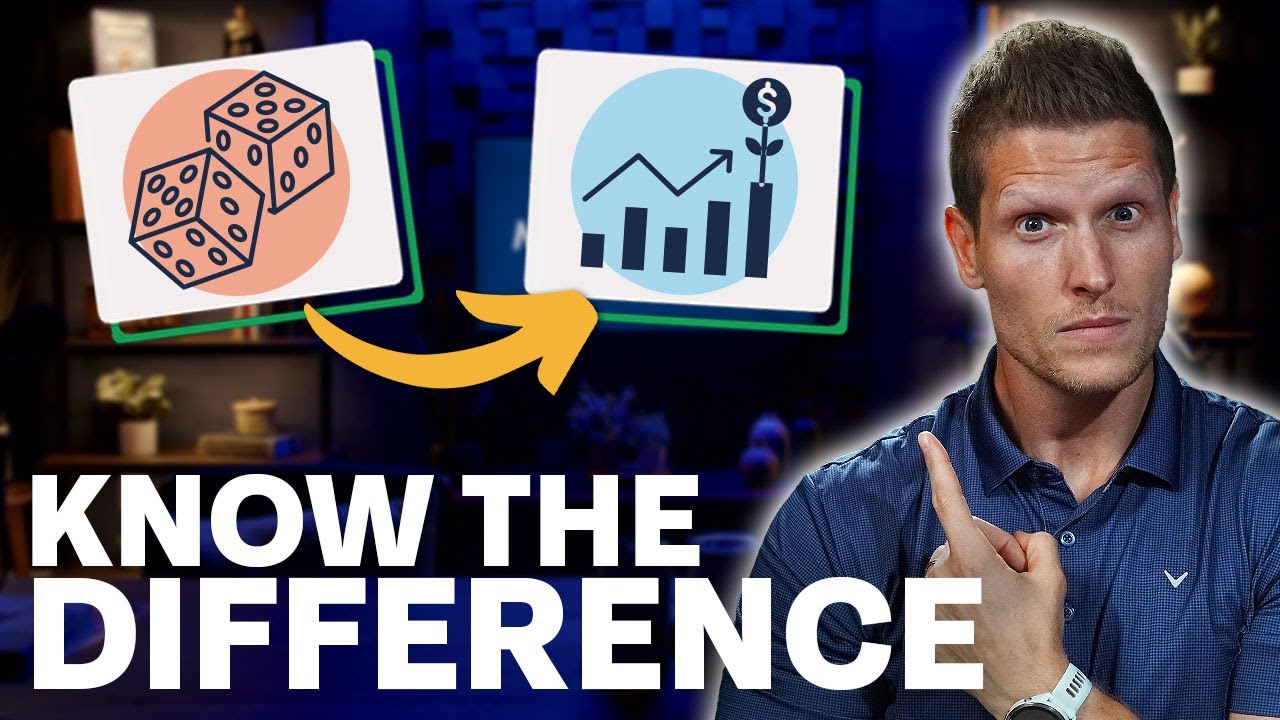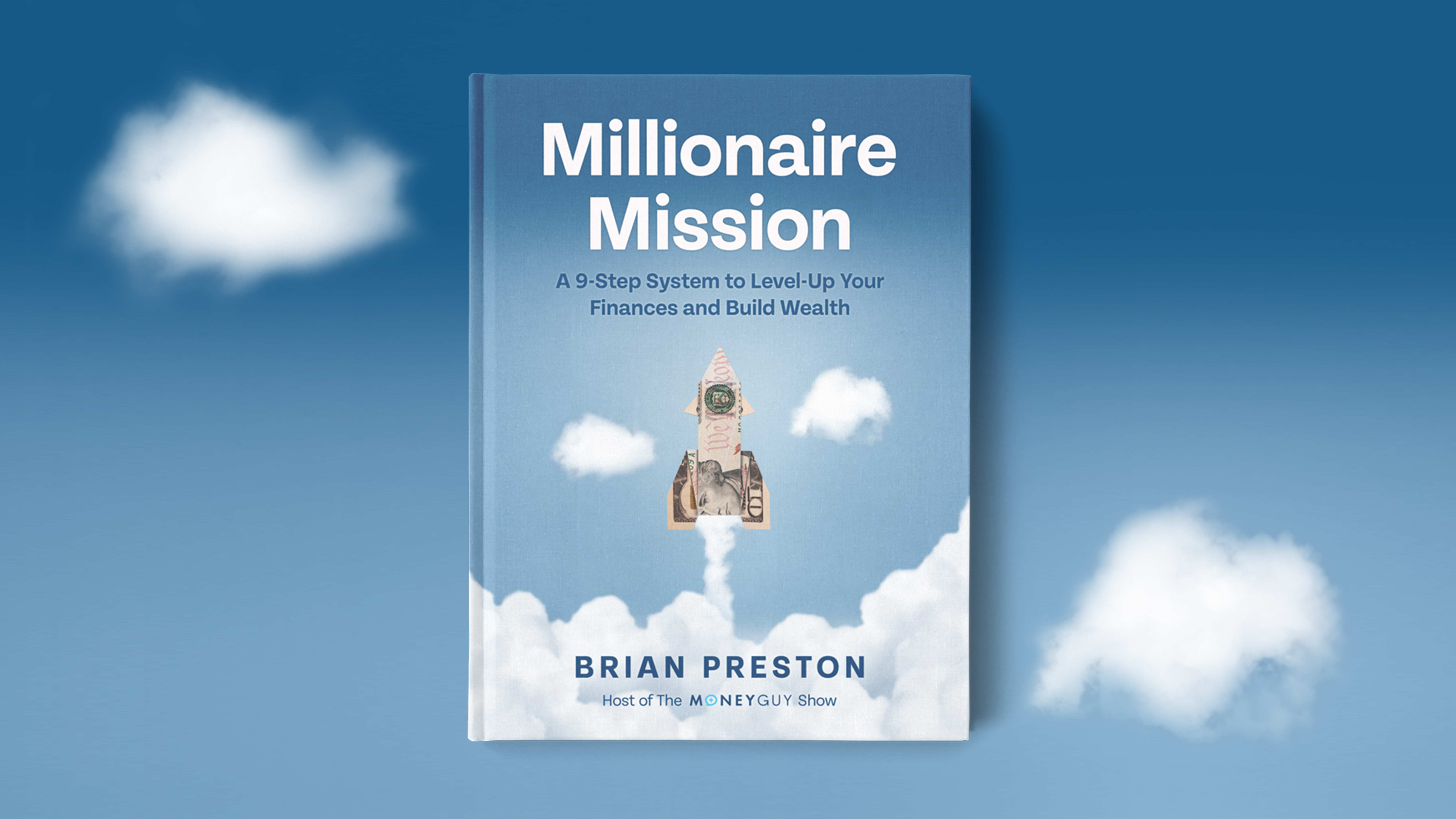I love this show because we focused on the things you should avoid, then we talked about things that are great Wealth Builders like real estate and entrepreneurship. But they definitely require a lot of your time, your energy, your passion. Let's talk about something that is a little bit easier; let's talk about the passive way to kind of build, and that's investing in index funds. Yeah, we love it - just letting your money work for you, rather than trying to figure out the next big thing or find the next amazing product or build the next business. Perhaps just taking a little bit of your dollars today, or if you're trying to get to a million dollars in 10 years, a lot of your dollars today, and putting them to work for you for the future, so that your money is actually working harder than you can. I think you'd be amazed; this is actually a viable way to build wealth, not just over the long term but also over the short term if that's what you're trying to do.
Now, this is going to take a little extra, you know, use and dedication. I mean, we're definitely leaning into the discipline component if you're going to do this in 10 years. But walk them through; we created a case study on this. Yeah, we said, what would be required if you wanted to start at zero today and you wanted to have a million dollars at the end of 10 years? And we just said, how much would you have to invest on a monthly basis if you could annualize 10% over that 10-year time period? Well, the number is $4,882 a month. So if you can start today and you can save $4,882 every month for the next 120 months and you can annualize 10% on your portfolio at the end of 10 years, you will have a million dollars in invested assets.
Now, I want everybody who's just listening to this; hopefully, my voice will help bridge this information. I want to share, but everybody who's watching this on YouTube, I want you to look at that visual. It's right there. Bo, just... I'll echo it: $4,882, that's what you'd have to invest, assuming a very... I mean, that's 10% per year; that's pretty aggressive. But here's what I think. If you look at the visual, I want you guys to look at the blue, the dark blue, that's the principle of your contribution. The light, that's not a teal but that's definitely a lighter shade of blue with a hint of green in it, that is actually your money working for you; that's the investment gains. Look at the visual on this. In the first 1 to 3 years, there's not much separation between what you've put in versus what the money made. But when you get out to year 10, man, this is when it's starting to get juicy. This is when it's great to be an investor, because we've reached the boiling point of letting your money work as hard as you do with your back, your brains, and your hands. So, that's the part I think to say. We're going to put a restriction on here that this is only a 10-year. We're actually undercutting... the sexiest part of investing in index funds is that, what is year 15, what is 20, 25, 30 years in the future? I mean, the separation from what you've put in to what it's worth is going to be dynamite. So, I'm just telling you, we're doing this just for education purposes, showing you 10 years. But the reality is, it's much sexier, much cooler to watch what this money can do over a much longer period of time.
Now, we would be doing a disservice if we did not actually walk through the flaws that are associated with this, because trying to become a millionaire in 10 years is an aggressive goal. And so, even in this analysis of putting your money to work as an index investor, there are some flaws that are worth mentioning, they're worth bringing up. The first is assuming a 10% annual rate of return in a 10-year time frame. Now, I can immediately hear people saying, "Oh, well, no historical S&P 500 return 9 to 11%." That may be true over a long time period, but if you shorten that time period and you look at 10-year periods, it's not a given that any 10-year period will annualize a 10% rate of return. I mean, certainly, we can think about the late '90s or the '90s decade; it was fantastic. You had large funds that were annualizing over 20%. But then you think about the 2000s, with two large downturns, two large recessions, and it was called the "L" decade. So, the 10 years that you choose to try to pursue this goal really matter if you're going to try to confine it all inside of a decade.
And also, everybody has a glide path. As you're super aggressive while you're young, but as you get close to actually retiring, you're probably going to moderate through a diversified portfolio. 10% annual rate of return is quite aggressive. The other thing that's super aggressive is that you would have to invest on an annual basis $8,995, and you'd have to do that every year for 10 years to get to a million. Well, most folks out there can't save almost $660,000 a year. Yeah, we did the math on it because, you know, we recommend around a 25% savings rate. That would mean you'd need an annual income of around $234,000. That's a lot of money; that's not what the average American makes. So, you'd either have to make a lot of money or live a lifestyle that is very minimalistic and allows you to save a large percentage of your income. That's hard, but maybe if your goal is part of FIRE, and you want to retire very quickly, then yes, you have to live like no one else, so you can make these types of goals work.
But before you invest, okay, so what are the things I can think about, so I can do this? Well, what are some things I can put into place to set me up for success? Well, the first is to decide how much you can save and automate it. You notice in our example, we said we're going to do the $4,882, and it's just going to happen every month. We didn't say in good months or bad months or anything like that; we set it and forget it. Make it automatic. If you can do that with your investment strategy, if you can get your dollars automatically working for you, if you can always be buying, you're likely going to set yourself up for an exciting financial future. Well, we kind of alluded to this one; you've got to also know a realistic rate of return. I mean, if you, and this is going to be the intersection point of your goals, your risk profile, and how much time you can actually be patient and let the money grow. So, know what a realistic rate of return is, and you're going to obviously build your financial plan off of that more realistic return rate.
Part of knowing that realistic rate of return is expecting the downturns. Know that when it comes to investing, it's not a straight shot from bottom left to top right; there's going to be volatility. So, make sure that you have a portfolio or an allocation or you're pursuing a strategy where you can stay the course if the market loses 30% this year. Are you going to be okay with the portfolio that you're invested in? Making sure that you don't make a permanent solution to a very temporary problem. Yeah, and you're mentally prepared for it because that's the behavioral stuff is the trap that people fall into. That's why I love talking about "always be buying." You have to create processes that will obviously make the good habits easy, the bad habits hard. And one of the things, if you can create an automated investment plan, you really are setting yourself up for inevitable wealth. So, do that, and I think you'll be successful. It's just be careful squeezing it down to a 10-year metric because that's a much harder thing. And we want to kind of talk about... We want to kind of bring this thing in for a closing and talk about, for all of these strategies, whether we're talking about real estate, whether we're talking about entrepreneurship, and of course, investing, including index funds, what does it come down to, Bo? There's really four things you can boil it down to. Number one, figure out how to increase your income. The larger your income is, the easier it is to do these things, the easier it is to start a business, the easier it is to save money for the future, the easier it is to purchase real estate. If you can increase your income, it's likely going to make pursuing your financial goals a whole lot easier. So, maybe you do that by pursuing a side gig, coming up with additional income streams, or maybe you just figure out how to be excellent, excellent, excellent at the job that you do, so you become as valuable as possible and you're compensated accordingly. And I mean, we talk about this just in case our younger listeners, focusing on... We, in our own studies of millionaires, 73% of our millionaires work in their field of study. We know there's a separation. The general public, only 27% actually do work in their field of study because the majority of them actually are working in something else. So, be very deliberate with how you're actually working in where your income comes from. So then the second step is, not only do you increase your income, you want to spend less than you make, figure out how to create margin between what I make and what I spend. And however large that margin is will affect how quickly and how rapidly you can pursue your goals. What we recommend, we want to see you saving 25% of your gross income. So, you take whatever you made last year, multiply it by 25%, and that should be your savings goal. If you can do that, you're likely going to set yourself up for success in the future. I love it because we've got these four things sitting here on the screen right now: spending less than you make, that's discipline, that's definitely an ingredient to wealth creation; invest the difference, that's the margin, that's the money that you're actually taking from the discipline and building the investment; and then, B, to kind of close it out, this is the most important component that we kind of cut the corner off of for this show, is time, and we just put the moment, the point of... You got to be patient; you got to be patient. For more information, check out our
free resources.













